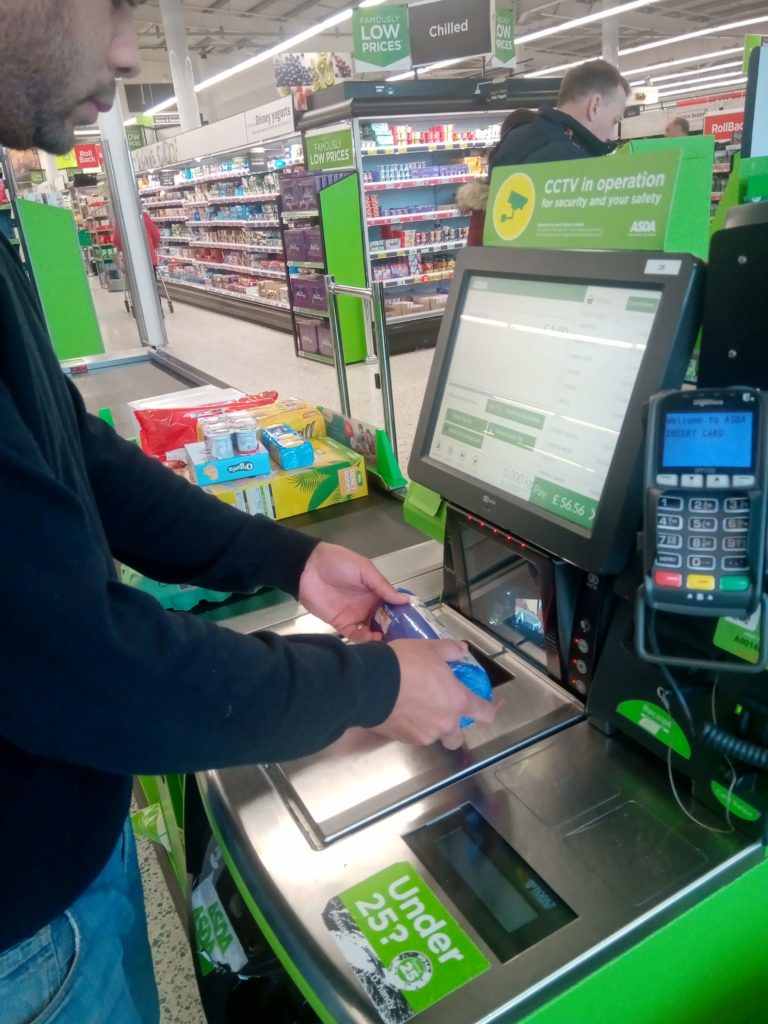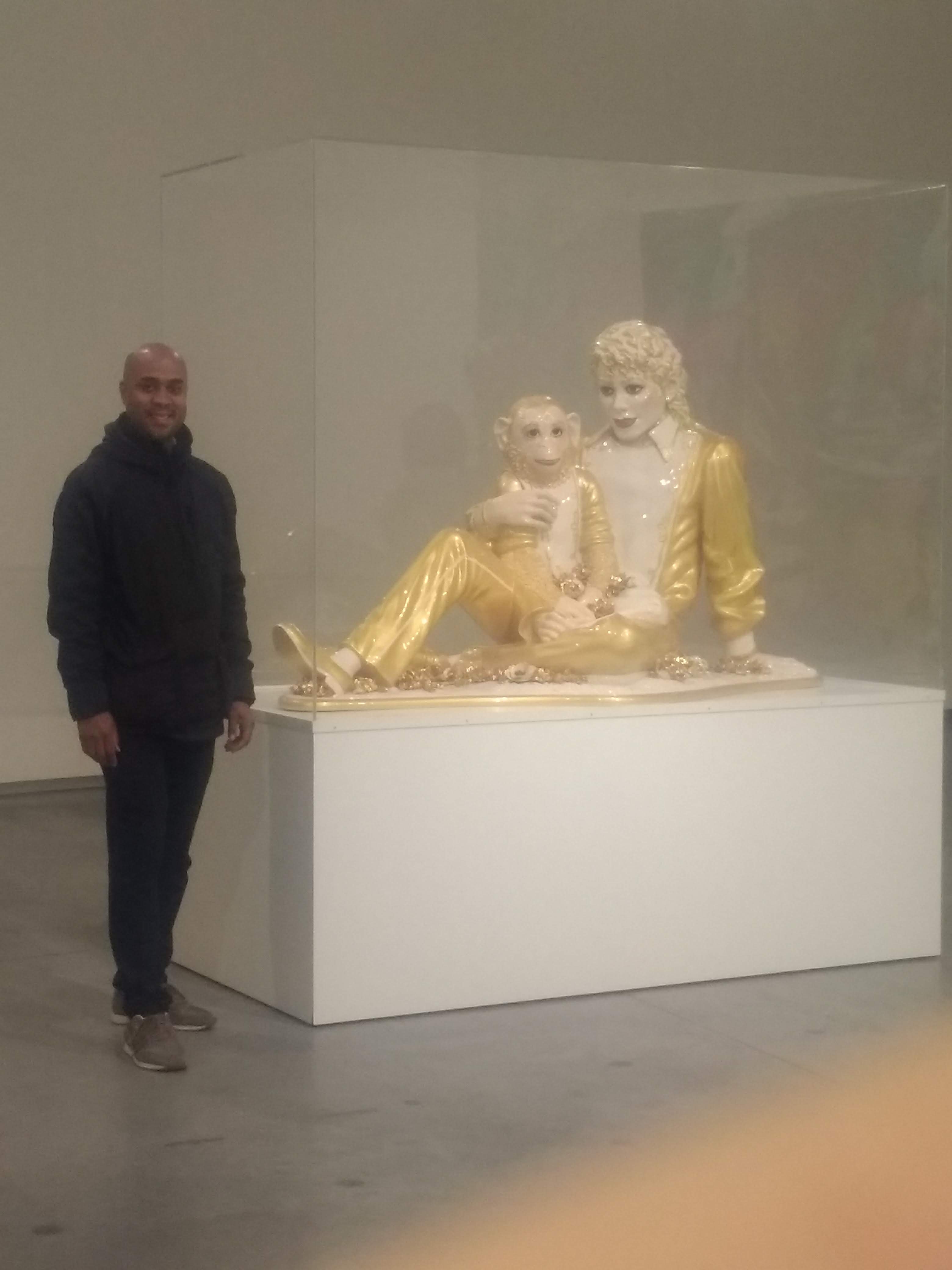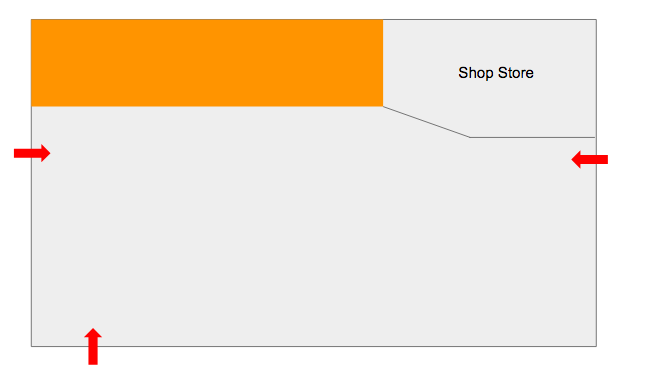
Used this self scan at @asda today to buy 50 items. Between my slowness and the software lag we counted 12 customers served in the same time it took me with roughly same or bigger trolley. Not quite the future of retail yet #retail #retailtech
Transformation: making a ruckus

Used this self scan at @asda today to buy 50 items. Between my slowness and the software lag we counted 12 customers served in the same time it took me with roughly same or bigger trolley. Not quite the future of retail yet #retail #retailtech
There are only three states of any business:
The first means close up shop so that’s assume that isn’t us.
Option two is where most cultural organisations sit and should be the initial focus for everyone. Either generate enough money to cover your running costs before your reserves or line of credit runs out and/or reduce your running costs until money in/out match. Its not the most comfortable place to be but perfectly respectable. Most of the folks I meet have 2-4 years to get to this magic number. A commercial business would have 90-180 days. Apply the 80/20 rule. where you apply 80% of your focus on the 20% that will offer the best way to get to the magic number. For example 20% of our retail products deliver approx 80% of our revenue. Same with venue hire customers.
Once you are able to meet budget you can then consider option three generating a surplus. Option’s two and three should be running in parallel where possible (see my thoughts on Scale elsewhere). Option three is about using any surplus to build the future – reserves, continuous improvement (that lead to further surplus of money or resource) and enabling activity not possible under the other conditions.
Most folks in the sector don’t write a business plan to know which of the three states they are in. Write it down. Use Seth Godin’s “The Modern Business Plan“.
Wednesday 23 October 2019
Title: The Changing Retail Landscape and how to succeed
To succeed you must be inspiring, innovating and trying new things all the time. Examples of three business doing this well are Harrods, Fortnum & Mason and Primark. Two words for success: “Be relevant”.
Ask yourself and your business to write four bullet points to show why you are relevant e.g:
Homework
His book is Almost is Not Good Enough ISBN 9781911195641
Slides from my 16th May 2019 talk at Museums + Heritage show at Olympia London. Do get in touch if you have any questions.
Zak will show you how Bristol changed from being a museum service to a cultural business. A focus on delighting visitors and being data-informed has seen the team of teams rise to the opportunities of income generation in the face of big challenges.
The 22nd March 2019 officially marks the day our retail business revenue hit 100% growth since 2014-15 which you can see in the performance spreadsheet. A proud moment for the service. I want to kick-off by thanking the retail team who have worked their socks off and have been up for the challenge since day 1 in 2015. Also none of our success would be possible without the support of the other teams who contribute to the effort including Retail Thinking, user research, design & marketing, digital, documentation, programming and operations. Retail is a living breathing example of our team-of-teams approach to solving problems. Why try to do everything yourself when you have some of the best talent in other parts of the service willing to rolling their sleeves up.
Transformation is not easy but our goal has been to grow the business year on year using the four retail pillars of Buying, Staff skills, Visual merchandising (VM) and Performance. The Culture team need to make or save £436,000 between 2017-2021 as part of the wider Council savings programme. Retail is a core player in this growth.
A quick recap of the marathon to date:
2015-16
We expect our services to be the best they can possibly be in our sector. Not just better than before or better than our nearest comparable museums. We should be as good as the best of the best anywhere on the planet.
We have made over 300 changes to the retail business. We have made every mistake possible and will make more mistakes in the future.
In no particular order I present a number of key changes:
Do email me if you have any further questions, advice or want to come and visit at zak dot mensah at bristol dot gov uk
PS At the time of finalising these notes Nipsey Hussle on 31 March died. I am a big hip-hop fan and listened to Victory Lap lots throughout 2018/19 and find business tips/books/ideas from rap. RIP.
I was invited to Oslo, Norway to give a talk and workshop to a network who represent 200 museums and galleries. I had previously visited Norway twice before and it’s definitely under the radar for most people. I arrived to Heathrow Terminal 2 early and used this as an opportunity to see how the shops were. Airports retail is often interesting as they usually invest in beautiful displays and make a lot of money. The mini John Lewis was a standout and I nearly fainted at the £68 at Dixon’s wanted for a MacBook air to hdmi connector which I passed on. The flight was full and they insisted my bag go into the overhead storage. This of course led to the breaking of my iPad screen. I still really really hate flying and my stomach felt like I’d been through the ringer even though the flight was smooth!
Oslo airport was impressive with great architecture and food shops as I whizzed by. The airport run into Oslo centre was via the efficient express train. It is only about 20mins and £20 each way. You can simply swipe your credit card for payment which is probably as frictionless as you can get. After a short walk to my hotel I went for dinner on the harbour at Olivia Aker Brygge with my host Elisabeth. Most of the city seemed closed which surprised me as they want to increase tourism. More food options on a Sunday evening please.
We had a very pleasant meal and chat.
The network met Monday to have a session with Innovative Norway to hear about the latest tourism plans. As the sessions were in Norwegian I had alternative plans to pass the time. After a nice walk through the Royal Palace Park and a glance at some royalty arriving with an escort I met with Ingrid who works at The National Gallery. The Gallery is most well known for displaying The Scream by Edvard Munch. I had an hour to really look around the retail offer and hear about the new plans for 2020 when the Gallery relocates to the the new location at Aker Brygge. I was stunned to hear that they will retain the existing building too. Great work whoever negotiated that deal. The retail offer had a really nice local artist and bespoke range that was also very popular. The long layout spread between two levels is challenging so I’m sure the team will be pleased to move to the new build where they will have three retail offers. I insisted on seeing the stockroom too as a lot is gleaned from the stockroom. I am very grateful to Ingrid for taking the time to host me.
Next I was due to meet Véronique from Astrup Fearnley Museet. Astrup Fearnley Museet is a private museum which re-located to the harbour in 2012. The building is stunning and set amongst law firms on the Fjord. I chuckled when I discovered that the collection store is under the water line. Brave! The retail area was designed by the architect so it has some very “interesting” challenges as is always the case with non-retail experts. That being said the shop looks amazing both as a piece of design and how Véronique and team have carefully considered the products and visual merchandising. Even the floor power had beautifully designed metal covers. I got to hear about how the team work with artists for in-store workshops and are constantly finding fun ways to engage with customers. I was mightily impressed with the retail. The product range was as good as anywhere i’ve ever been and they are quite rightly profitable.
I was visiting on a Monday when they were closed to the public which gave a rare chance to quickly explore the galleries including Jeff Koon’s latest exhibition and the permanent collection which includes Damian Hirst. The museum is a popular place to hire too and I enjoyed the visit. If the shop had been open and I had more time I’m confident I would have spent lots of money. The match boxes made using the collection were a personal highlight – the low light throughout winter means matches are a very popular purchase. They will launch an online shop before the end of the year.

Jeff Koon’s sculpture – Michael Jackson and Bubbles
By this point it was mid-afternoon and we rejoined the rest of the group to get a coach to a number of museums and galleries outside of the central. We started with the home of Roald Amundsen who was the first person to reach the South Pole in 1911. The house is located about 45min drive from the centre of Oslo on the Fjord in the type of location that these days money can’t buy. The house has pretty much been left as it since the day Roald left it for the last time. The home is restricted to 2000 visitors per year so I felt pretty lucky. The tour was in Norwegian but my partner in crime Mathilde Emilie Johnsen kindly kept me in the loop.
Our next museum was a cartoon museum with gallery called Avistegnernes Hus, DrØbak. The space was across two floors with plenty of cartoons (Newspaper cartoons) and was showing photography from Willibald Storn. Our host gave an overview of the history of the space which is famous in the newspaper cartoon world. Tasty local apple juice made for a very pleasant time.
Next we took a ferry boat across a Fjord to an island to Ank Oscarsborg. A fortress that was in use until about 2000. We had a wonderful dinner and great conversations about Norway. I really enjoyed the afternoon and evening not only to see the museums but to just “see” Oslo and surrounding area as the bus whizzed around. A quick beer at the hotel saw in midnight. Tuesday was my day to deliver a 90min talk with discussion and a practical workshop. I love days like this which hark back to my time delivering training at University of Leicester and for Jisc as part of the University of Bristol. I feed off the energy of the room and we all get to exchange ideas and challenge everything. I always learn a lot too even as the presenter. For example the majority of the room said they were running at 35%-40% gross profit margin. This makes it hard to be profitable and was a nugget for the day which I used for reference. The group seemed to really enjoy the day and I loved a short session where each person gave a 5min presentation with photos of their retail offer. A good way to see where they come from and the scale of the retail offer. If I had to guess which two areas they really engaged with the most I would say making a roadmap and learning what your museum “touch points” are. A roadmap using trello is a quick and easy way to work with colleagues on delivering incremental benefits. A touch point is any point of contact that any member of the workforce has with a visitor. There was a definite lightbulb moment when the room realised just how many interactions a visitor can have. The point is to surface opportunities to delight a visitor and to show that retail needs to be out in the museum not just in the retail space in order to maximise the opportunity to raise awareness. Follow the visitor. In practice it may be that placing a display in the cafe or a sign in the toilet is a way to become visible to visitor who would normally just skip the retail offer by default.
After the sessions I headed to the airport with a few of the group. I had a few hours to spare so got to people watch and relax after a long day on my feet. I had a quiet flight back and crawled into bed about 3am.
I would like to thank everyone that I had the privilege of talking to and Norway continues to be a delight. I hope to return for more workshops in the next year.
[Music I listened to: Belly – Immigrant, Edvard Grieg – The Best of Grieg, 6Lack – East Atlanta Love Letter, Travis Scott – Astroworld, Westside Gunn – Supreme Blientele].
In late June 2018 we ripped out our stockroom at Bristol Museum & Art Gallery shop to give us 20% more floorspace for selling during our refit.
Three months on and the decision remains a sound choice and acceptable risk.
When you think of a traditional shop and what is fundamental to success, having somewhere to store products is usually high up the list. Yet i was unconvinced. For various reasons our shop stockroom was full. Upon close inspection I estimated 50% or greater of the stock was very old and has long lost any sellable value. Unsold stock just stuck around. Unsold stock actually costs us money:
With quite the list of reasons to loath the stockroom myself and the retail manager decided to work though the stockroom. We discovered stock from the 1960s and each decade in-between I kid you not! I half jokingly said that any stock from before the year I was born 1983 automatically had to be removed. We made a sale table. If it failed to shift we offered it to charity groups and then finally recycling or the skip. The day we hired a skip was a turning point for rebooting the shop. After several months we managed to reduce the stockholding to approx 50% and mostly maintain this figure even when re-ordering.
 [Fig 1] shows in the red and top 20% of the graphic is the original stockroom footprint.
[Fig 1] shows in the red and top 20% of the graphic is the original stockroom footprint.
Around this time we started to drum up the support needed to refit the shop itself. All the low hanging fruit had been uncovered and it was obvious the shop fittings wouldn’t help us grow. Initially the plan was to retain the stockroom but our exercise above proved it might just be possible to be effective with a reduced stockroom.
 [Fig 2] shows Initial revised floor plan which retained a small stockroom and office.
[Fig 2] shows Initial revised floor plan which retained a small stockroom and office.
I had asked others if the stockroom was needed as a way to sense check. Everyone told me to retain at least some stockroom OR place to sort products and just like that was the aha! Moment. I had just visited a whole lot of museum shops in recent months. All the newer designs included ample under bay storage. I calculated that the under bay storage was roughly equal to the amount we currently had. Furthermore I had just read The Toyota way which championed ordering “just in time”.
Armed with this information myself and the team decided losing the stockroom was worth the risk. At worst we would need to hide away products in one of the many random corners behind the scenes.
 [Fig 3] shows the final design of the shop which eliminated the stockroom completely
[Fig 3] shows the final design of the shop which eliminated the stockroom completely
Fast forward to three months post refit and we haven’t had an big problems coping without the stockroom. In fact having the back up stock directly under the bays has made improvements to stock checking and merchandising. The team have reported that it works well too which is vitial of course!
Onwards
Bristol Museum & Art Gallery shop has been named shop of the month for August by the Association for Cultural Enterprises. It is great to join a long list of fantastic shops that have been highlighted in the past. This makes us eligible for submitting our shop for Best shop in the sector at the 2019 ACE convention. Since 2015 we have worked very hard to make incremental gains in all aspects of the retail offer. According to my personal retail changelog we have made over 350 notable changes since 2015. I hope the team are proud of the work they have done to date and I look forward to sharing more details of the project, its impact and our future roadmap. If you have any questions about our recent shop refit, our successes or failures then do get in touch. Onwards.
Since 2015 when we launched Shopify POS for our shops we’ve put over £1.75m through the app (about £800K this year alone). So yes I trust it. We’e just signed up for another three years in fact to take advantage of the multi year discount. I was recently testing a new feature which reminded me to jot down a few wish list features i’m hoping Shopify will make on the POS app or admin:
I wrote a piece for Arts Professional:
Three years ago Bristol’s museum and gallery shops were running without a plan and losing money, but now they are on track to increase revenue by 60%. Zak Mensah tells the story.